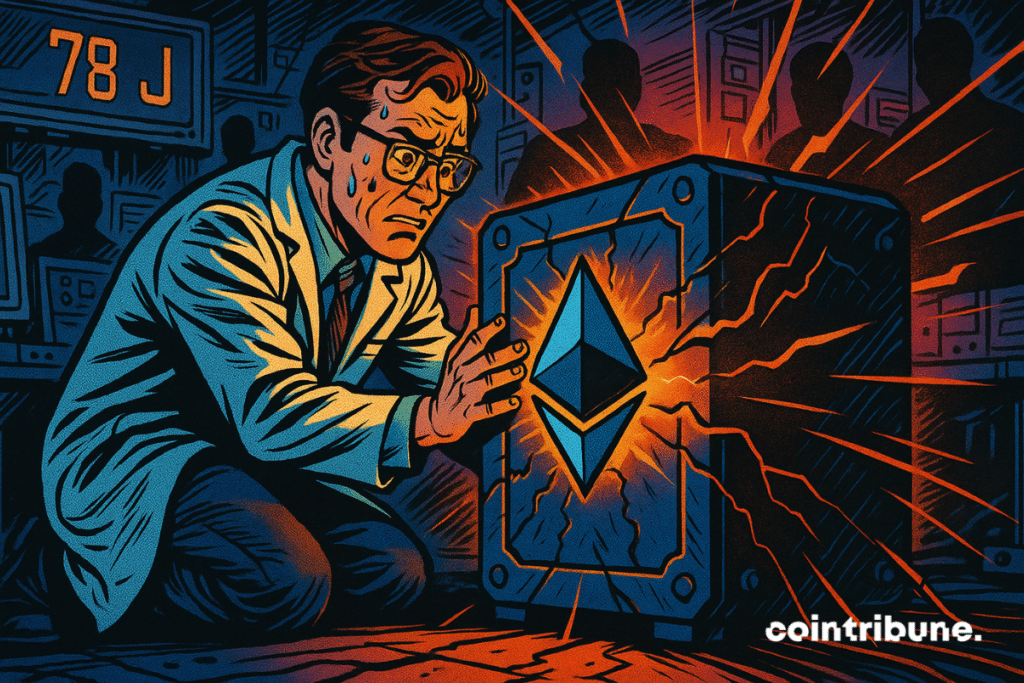Ethereum: The Fusaka Upgrade Officially Postponed to December
Ethereum is about to reach a key milestone in its evolution. After months of intensive development, the Fusaka upgrade is now expected on December 3, 2025. This delay reflects a desire to balance security, scalability and attractiveness. What impact for users and investors?

In Brief
- Ethereum’s Fusaka upgrade is officially scheduled for December 3, 2025.
- Public tests will start in October on three test networks before the main deployment.
- Blob capacity will gradually double with two additional hard forks in December and January.
- A 2-million-dollar audit program has been launched to secure the code before going live.
Ethereum Postpones the Fusaka Update Again
Ethereum’s core developers decided at the Consensus (ACDC) #165 meeting. The Fusaka hard fork, originally planned for November, will finally take place on December 3, 2025. This decision reflects the teams’ desire to prioritize security and stability rather than yielding to time pressure.
Christine D. Kim, a recognized figure in Ethereum research, confirms that this upgrade will include twelve Ethereum Improvement Proposals (EIPs). The goal is simple: to radically transform the network’s scalability while preserving its decentralization.
The deployment schedule follows a logical and secure progression. Tests will begin on Holesky on October 1, continue on Sepolia on October 14, then on Hoodi on October 28. This validation phase will allow identifying and fixing the last vulnerabilities before the launch on the main network.
The Ethereum Foundation has also launched a four-week audit program, with $2 million in rewards. This initiative demonstrates the strategic importance given to Fusaka and the determination to avoid any major technical incident.
Blobs at the Heart of the Technical Revolution
The most striking innovation of Fusaka lies in its revolutionary handling of blobs. These data structures, introduced with the Dencun update, store large amounts of off-chain information. Their optimization is a crucial challenge for the efficiency of layer 2 networks.
The schedule is already set: two weeks after Fusaka’s launch, around December 17, the maximum capacity will increase from 6 to 15 blobs per block. Then, a second hard fork scheduled for January 7, 2026, will raise this limit to 21 blobs.

As pointed out by the Ethereum developer community ethPandaOps, “5 BPOs are planned for Fusaka, which allows us to guarantee great scalability of the main network, safely.”
This gradual evolution responds to a tangible trend: since March 2023, the average use of blobs has increased from 0.9 to 5.1 per block, according to Dune’s data.
This rapid growth illustrates the urgency of scaling capacity to absorb increasing demand, especially from rollups and other layer 2 solutions.
The BPO hard forks present a major technical advantage: they require no client-side update. This simplicity facilitates deployment and minimizes the risks of network fragmentation.
Data availability sampling by peers, another novelty of Fusaka, will allow validators to efficiently verify large data sets without downloading the entire information.
Careful Preparation Facing Adoption Challenges
Recent news highlights certain tensions in the Ethereum ecosystem. The validator exit queue has reached a record level with 2.6 million ETH waiting to be withdrawn, nearly $12 billion.
A figure that raises questions: does it reflect a loss of confidence from some actors or a simple natural rotation of staking? And above all, what potential impact on the ETH price?
Facing these concerns, Vitalik Buterin, Ethereum’s co-founder, sought to reassure. According to him, the long exit queue exists for a reason. Artificially shortening these delays would weaken the protocol’s robustness and make it “much less trustworthy.”
This position illustrates Ethereum’s permanent dilemma: to offer more flexibility to participants while ensuring the network’s structural security.
The Fusaka upgrade fits into a progressive roadmap. After Pectra in May 2025 — which introduced account abstraction and optimized validator efficiency — Fusaka represents an intermediate step before the Glamsterdam hard fork, expected in 2026.
This next evolution should target reducing block times and integrating the complete EVM object format (EOF), further enhancing the ecosystem’s performance.
Maximize your Cointribune experience with our "Read to Earn" program! For every article you read, earn points and access exclusive rewards. Sign up now and start earning benefits.
Passionné par le Bitcoin, j'aime explorer les méandres de la blockchain et des cryptos et je partage mes découvertes avec la communauté. Mon rêve est de vivre dans un monde où la vie privée et la liberté financière sont garanties pour tous, et je crois fermement que Bitcoin est l'outil qui peut rendre cela possible.
The views, thoughts, and opinions expressed in this article belong solely to the author, and should not be taken as investment advice. Do your own research before taking any investment decisions.